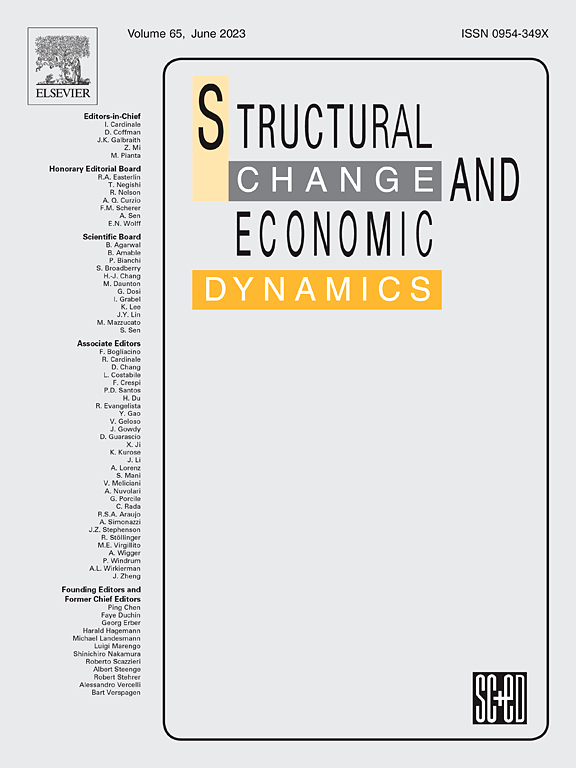Technological change and entrepreneurial activities: Evidence from China
IF 5
2区 经济学
Q1 ECONOMICS
引用次数: 0
Abstract
This study is among the first to examine the impacts of technological change on entrepreneurial activities. Using new registered enterprises data and industrial robot data from 2010 to 2018, we find that robot adoption is broadly negatively associated with regional entrepreneurial activities. However, our analysis reveals a more nuanced understanding, in which robot adoption boosts high-quality entrepreneurial activities in regions, specifically those in technology-based industries, but reduces low-quality entrepreneurial activities. We also find that a favorable labor allocation environment and sufficient labor resources, as well as abundant high-skilled labor resources, can mitigate the negative impact. Credit constraints and the upgrading of industrial structures are effective in mitigating the crowding-out effect. In cities with higher unemployment risks, the negative effect is attenuated. The extent of the negative effect varies depending on the prevailing macroeconomic conditions, and the hukou reform helps to mitigate the negative impact. In addition, robot adoption has a significant spatial spillover effect between adjacent cities. These findings shed light on the effects of industrial robot adoption on local entrepreneurial activities, as well as the role of technological change in fostering entrepreneurial activities. Our findings suggest that it is crucial to grasp the strategic opportunities embedded in technological change to spur entrepreneurship.
技术变革与创业活动:来自中国的证据
这项研究是第一批研究技术变革对创业活动影响的研究之一。利用2010年至2018年的新注册企业数据和工业机器人数据,我们发现机器人的采用与区域创业活动普遍呈负相关。然而,我们的分析揭示了一个更微妙的理解,即机器人的采用促进了地区高质量的创业活动,特别是那些基于技术的行业,但减少了低质量的创业活动。我们还发现,良好的劳动力配置环境和充足的劳动力资源以及丰富的高技能劳动力资源可以缓解这种负面影响。信贷约束和产业结构升级能够有效缓解挤出效应。在失业风险较高的城市,负面影响减弱。负面影响的程度取决于当前的宏观经济状况,而户籍改革有助于缓解负面影响。此外,机器人采用在相邻城市之间具有显著的空间溢出效应。这些发现揭示了采用工业机器人对当地创业活动的影响,以及技术变革在促进创业活动中的作用。我们的研究结果表明,抓住技术变革中蕴含的战略机会来刺激创业至关重要。
本文章由计算机程序翻译,如有差异,请以英文原文为准。
求助全文
约1分钟内获得全文
求助全文
来源期刊

Structural Change and Economic Dynamics
ECONOMICS-
CiteScore
9.60
自引率
4.90%
发文量
159
期刊介绍:
Structural Change and Economic Dynamics publishes articles about theoretical, applied and methodological aspects of structural change in economic systems. The journal publishes work analysing dynamics and structural breaks in economic, technological, behavioural and institutional patterns.
 求助内容:
求助内容: 应助结果提醒方式:
应助结果提醒方式:


